Perhaps one of the greatest spectacles of this freediving spot is the stunning lighting effects in the cave created by the sunlight hitting the water. At the same time, there is plenty of marine life to marvel at. Here you’re bound to encounter cardinal fish, barracudas, parrot fish, spotted doris, john dory, octopus and so much more.
50 meters
Easy
Rocky
Easy
NA
Yes
How to get there
Located on the west coast of the island of Gozo, Dwejra can be reached either via your own transport or you can use our transport service that will take you to and from the dive spot. If you’re heading to the location with your own car, simply follow the signs leading you to Dwejra. The inland sea itself can be found behind the Chapel of St. Anna.
Explore the Dwejra Inland Sea & Tunnel
The small, semi-circular lagoon of seawater of around 60 metres in diameter is considered a top diving spot, linked to the sea through a narrow opening formed by a natural arch and a 50 metre cave. At a maximum depth of 2 metres, the area is highly picturesque, housing traditional fishing boats while surrounded by nature. The tunnel itself is far more impressive, stretching almost 80 metres in length and offering an excellent diving experience. In fact, legendary French conservationist and maritime explorer Jacques Cousteau had once revealed that diving in the area was among his 10 top dives.
And whereas up until 2017, the Azure Window was the main attraction that brought droves of visitors to the area to marvel at the natural window, the popular landmark has become a new hot spot for divers as the collapsed arch underwater has created many rock formations, each with several swim-throughs ranging from a depth of 10 metres to 25 metres and home to a variety of underwater flora and fauna.
What to look out for
What to look out for
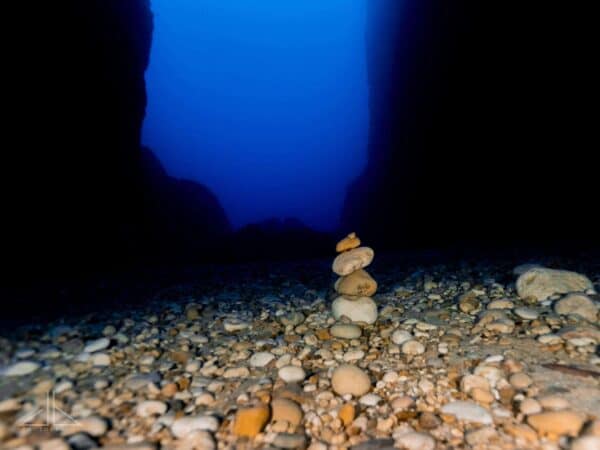
How to dive this site
The diving site has easy entry and exit points. The entrance is through the shallow Inland Sea with its pebbled and rocky bottom and with the seabed getting progressively deeper as you enter the tunnel – starting at 3 metres and leading all the way down to 26 metres.
Once you have explored the tunnel, you may proceed to dive the reef walls located north and south of the tunnel’s exit and then return to the inland sea through the tunnel. The seabed outside the tunnel drops to around 50 metres.
Close by the Azure Reef, you’ll also find one more excellent dive site – the Blue Hole.
Bonus tip: The Dwejra Inland Sea and Tunnel is popular to divers, swimmers and tourists doing boat tours, which means that during peak summer season, it can be quite busy with heavy boat traffic. Make sure you’re careful when freediving the site.
How to dive this site
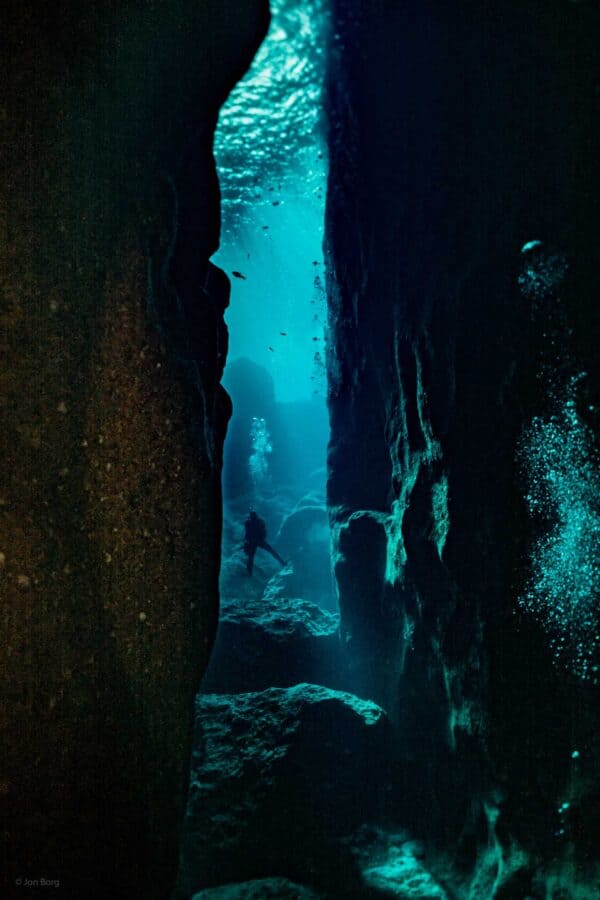
About Dwejra
Both a geological and ecological haven,the entire Dwejra Bay area is known to attract tourists and locals alike, as well as artists, geologists and naturalists who are often fascinated by its rugged beauty and its blend of geology, landscape and seascape, flora and fauna. If you’d like to enjoy the view from above the waves, you may want to take one of the boat rides, which will take you right through the tunnel and out to the open sea. There you’ll be able to see the scenic coastal landscape and deep blue sea from a different vantage point, while as you approach the area of the collapsed Azure Window and look down into the sea, you’ll be able to make out sections of the arch underwater.
If relaxation is what you seek after your freediving session, Dweja has several areas where you can soak up the sun. The Chapel of St. Anne, situated between the Inland Sea and the Blue Hole, is worth a visit and so is the restored Dwejra Tower, also known as Qawra Tower, which offers breathtaking views.
About Dwejra
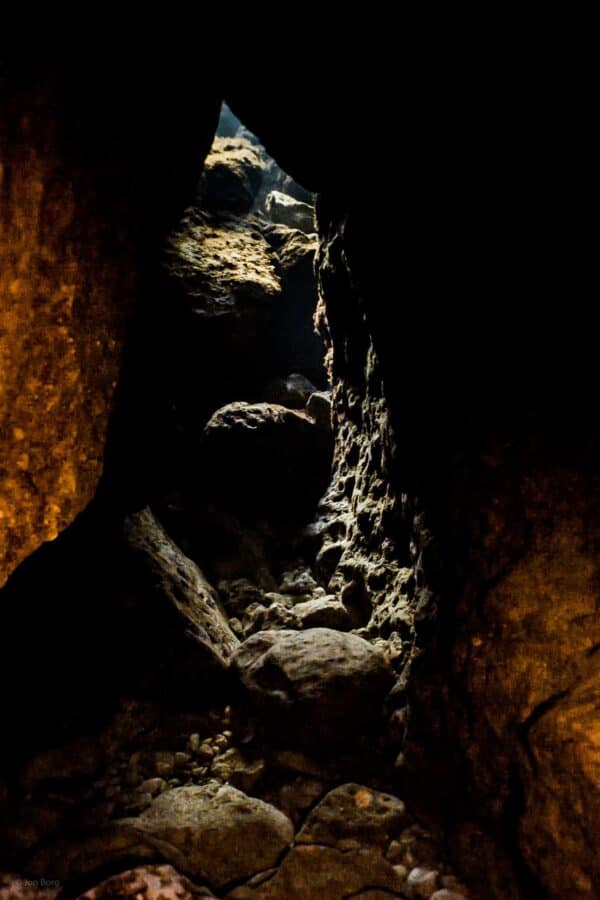
Dwejra Inland sea images
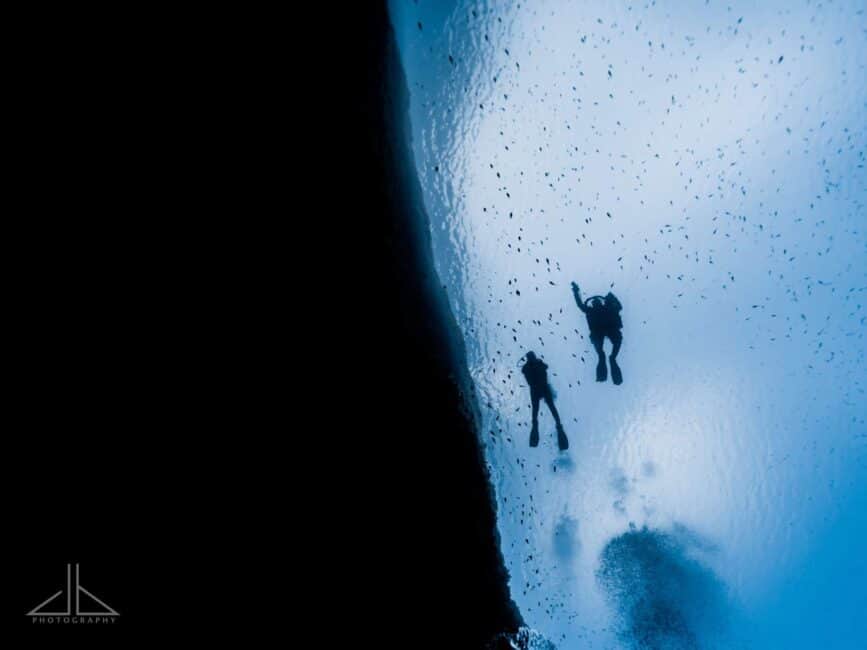
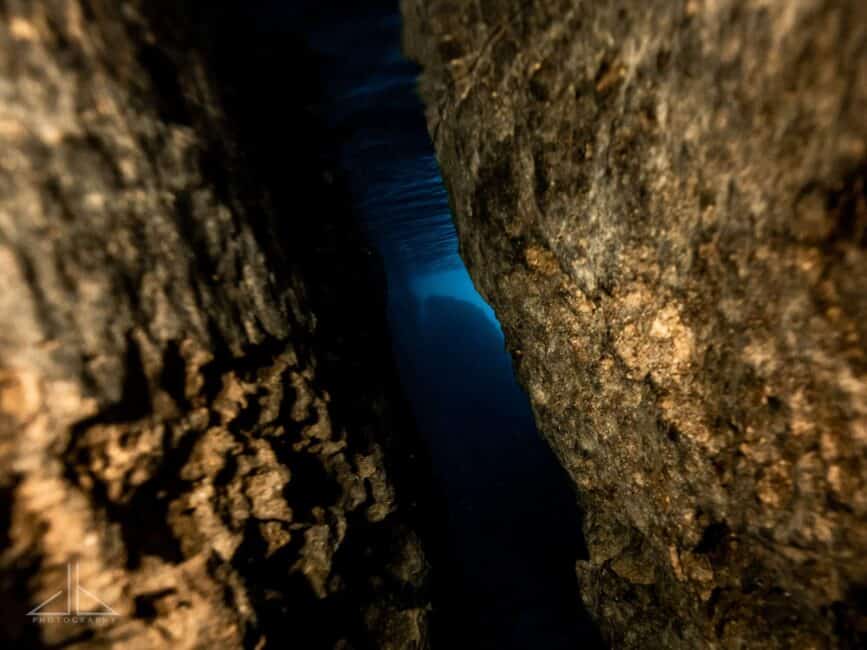
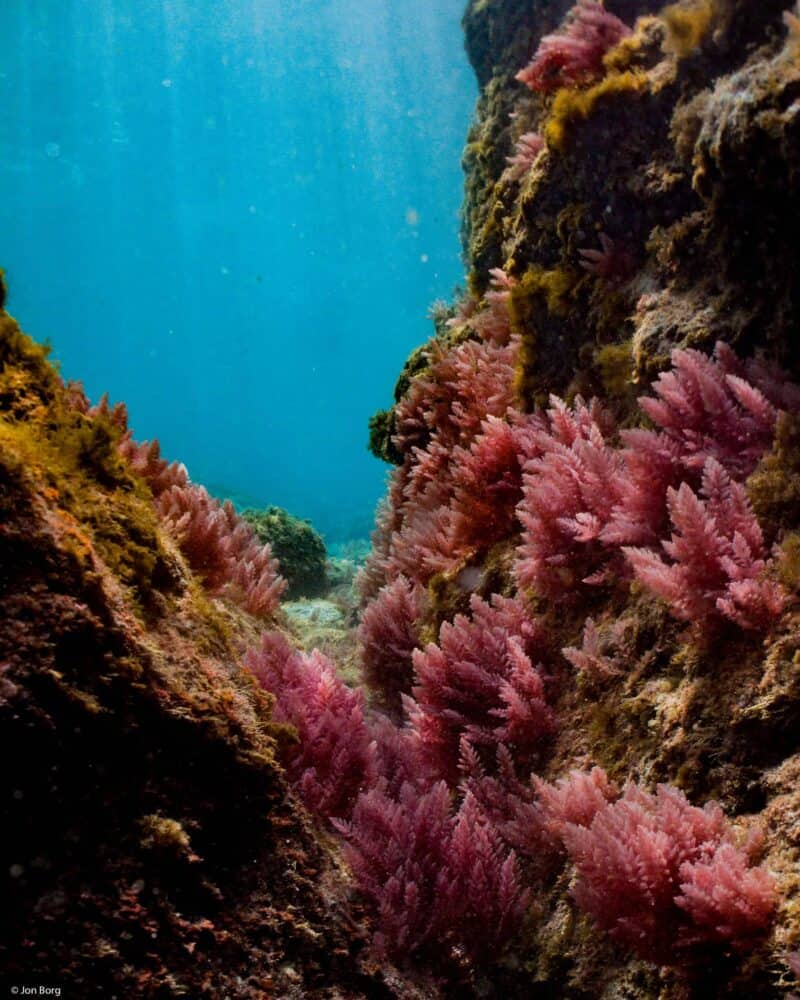
Frequently Asked Questions
-
Is it safe to freedive the inland sea?
Yes, but you do have to be careful of the boat rides. Boats come in and out of the cave and whilst the helmsman are attentive and alert, they are quite speedy. Stick to the side and keep alert whilst never looking down at the bottom of the seabed. Give them a wave to make sure they see you.
-
Can we freedive the tunnel leading out to the open water?
Freediving during peak months is definitely not an option because of the boat rides. It’s best to freedive the tunnel during low season, preferably between January and April whilst still keeping a watchful eye. Check out the excursions we offer and we’ll be able to help you.
-
What's the best wind direction to dive the inland sea?
Because of the closed and protected nature of this dive site, almost all except when it’s gale force winds, particularly West and North-west. If you wish to cross through the cave and freedive the open water, the best wind direction is north-easterly, easterly and south-easterly. You may dive the open water in other wind directions when it’s light.
-
During which time of the day is it best to dive?
Either very early morning hours or during sunset to avoid tourists. During the hours of sunset, the skyline bursts into wonderful colours with towering cliffs all around you. We sometimes use this time of day during our courses or coaching session.